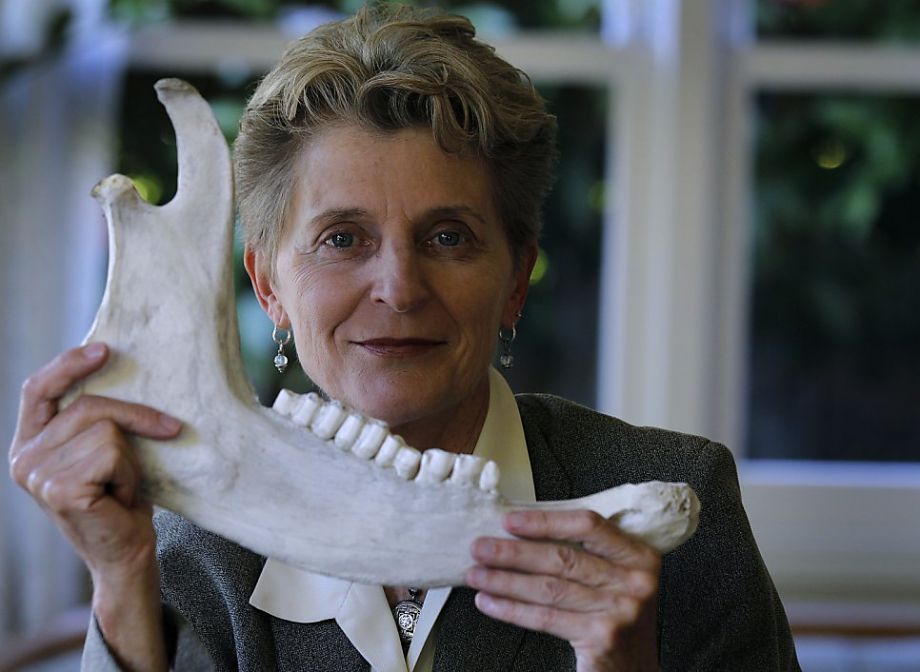Chiropractor offers hope, treats osteoporosis
June 08, 2012 4 min read

San Francisco Chronicle Feature Article
by Pat Yollin July 3rd
Twenty years ago, Lani Simpson learned she had osteoporosis. She was only 42.
"It terrified me," she said. "All of a sudden, it made me feel weak. Did it mean I couldn't jog or play tennis or roller-skate?"
What it meant was that Simpson, a chiropractor who figured she knew quite a bit about the 206 bones in the human body, realized she had a lot more to learn. She is now a clinically certified bone densitometrist - adept at analyzing bone density scans of the hip and spine - and has her own practice in Berkeley, which combines conventional and alternative approaches to address a condition that affects 10 million Americans, 80 percent of them women.
"She's a Bay Area gem," said Dr. Claude Arnaud, an endocrinologist and retired UCSF professor of medicine and physiology who has collaborated with Simpson for 10 years. "She is extremely good as a clinician, and she's gained a great deal of knowledge of nutrition and dealing with bone diseases associated with the gastrointestinal system."
Arnaud, an osteoporosis expert, said, "She listens to patients and has very good common sense."
Simpson said she believes her bones deteriorated because she started smoking at 12 and ate junk food as a teenager.
"I hoped it would be simple, that I could just smear on progesterone cream or that a single supplement would take care of it," said the longtime Berkeley resident, who is tall, thin and amazingly upright. "But bone is very, very complex. There is no magic bullet."
Over the years, she has consulted with hundreds of women, spoken to thousands more at conferences and taught health professionals about osteoporosis, which was responsible for about 2 million fractures in the United States in 2005, according to the National Osteoporosis Foundation. Simpson's recent free lectures at the Berkeley YMCA and the Albany Public Library were standing room only, and her six-hour March workshop sold out.
At each venue, she makes a few key points right off: It's never too late or too early to build healthy bone, which is dynamic, alive and a reservoir for nutrients. Although increasing bone density is not easy, bone quality extends way beyond density and can be improved at any age through exercise and nutrition. Good balance is paramount to prevent falls. Drugs are overprescribed but sometimes necessary. And every case of osteoporosis is different.
"If you're losing bone, I want to know why," Simpson said.
Appropriate tests vital
She said it's vital to make sure appropriate laboratory tests are ordered to determine whether bone is stable or if active loss is occurring for any number of reasons, including inadequate nutrition, digestive disorders, kidney problems, poor calcium absorption, parathyroid disease or something else.
Admittedly messianic, she regularly updates her website, www.LaniSimpson.com, offers free webinars and scrutinizes medical research as well as claims by supplement companies. "You're lucky if there are six rats in some of these studies," she said.
Veronica Bhonsle, 53, who owns a hair salon in Oakland, was diagnosed with an advanced case of osteoporosis three years ago. A doctor urged her to take Fosamax, which builds bone but has been linked to osteonecrosis, or bone death, in the jaw as well as atypical femur fractures. In May, the Food and Drug Administration urged caution in long-term use of this drug and other bisphosphonates.
"I was scared to death of doing Fosamax," Bhonsle said. "But I felt my body was going to break anytime. Lani put me back together."
Simpson determined that her client's osteoporosis was the result of a vitamin D deficiency and premature menopause. Bhonsle said she now takes 1,000 milligrams of vitamin D daily and wears a patch that administers a small dose of bioidentical estrogen, an exact chemical match to the estrogen that humans produce. She walks whenever she can, and eats nuts and calcium-rich yogurt, which is easily digested. As a result, she has gained bone density.
No 'cookie-cutter' tips
Berkeley meditation teacher Patricia Ellsberg, who also works with husband Daniel Ellsberg (of Pentagon Papers fame) on social change, said Simpson has been a wise, thorough and compassionate guide as she struggles with osteoporosis.
"She refuses to give cookie-cutter advice," Ellsberg said.
Good practices
Still, Simpson said some things are good for most people: Include bone-building foods in the diet, such as prunes, figs, nettles and green leafy vegetables. Take 2,000 international units of vitamin D3 daily but check with your doctor to be sure it is safe for you. Avoid soft drinks, processed carbohydrates and sugar, and minimize alcohol intake. If you must have coffee or tea, don't drink them on an empty stomach because they're highly acidic and hurt the stomach lining, which can make digesting the nutrients crucial for bone health more difficult. Lift weights and do weight-bearing types of exercise that strengthen bone, such as jogging, walking or tennis. Take calcium supplements, if needed, in divided doses instead of all at once to maximize absorption. And do your best to avoid falling, which can lead to fractures.
"I stopped roller-skating this year," said the 62-year-old Simpson. "But I think I was safer than most women are in high heels. Who wants to break their hip falling off their shoe?"
Patricia Yollin is a freelance writer and editor. E-mail datebookletters@sfchronicle.com
Subscribe
Sign up to get the latest on sales, new releases and more …

